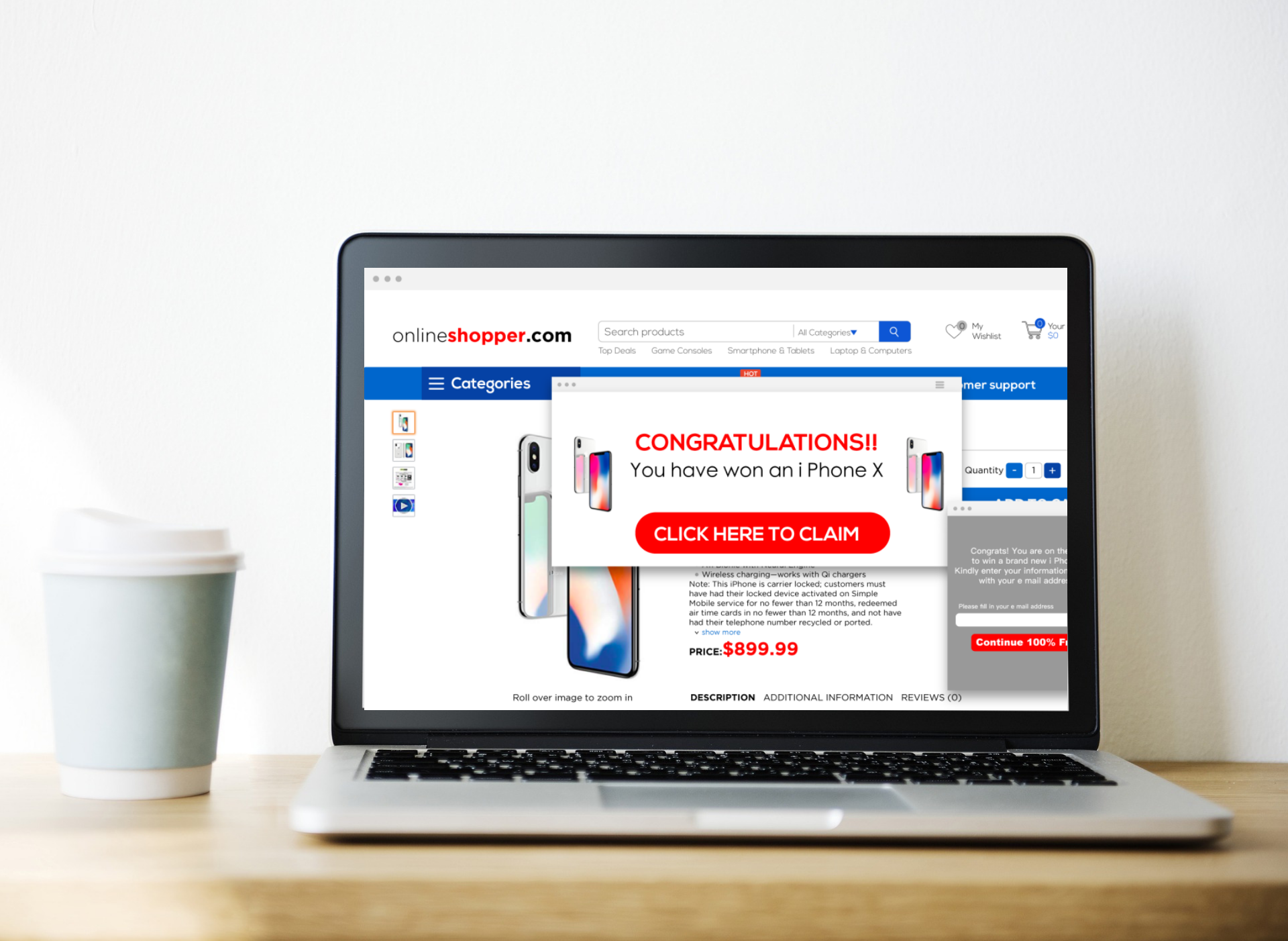Many eCommerce companies do not realize that a significant portion of shoppers that visit their website experience distractions from unsolicited ads and pop-up coupons. These ads redirect shoppers to competitor websites, display unwanted content, and fraudulently tag conversions to collect affiliate fees.
The miscreant: Ad injections.
What are Ad Injections?
Ad injections are unauthorized software injected into your customers’ browsers without their permission.
These ad injections are installed when customers download browser extensions, apps or access unsecured public Wi-Fi networks.
The process is based on adware – where ad injections disguise themselves as legitimate software or piggyback on other software to mislead website visitors into installing it on their desktop, tablet, or mobile device.
Once ad injections hijack the customer browsers, they can generate revenue for traffic hijackers by serving ads and stealing ad impressions from other websites. In eCommerce, price comparison ads are used to distract customers’ attention from making a purchase. Competitor ads are also displayed to steal customers away.

How do Ad Injections work?
Once installed, unauthorized ads start to appear on all the pages of your website. Customers fall prey to these ads and are redirected to other websites. This phenomenon is also referred to as Customer Journey Hijacking.
“Any company selling online that relies on steady traffic in order to sell products should care about journey hijacking.”
– Gartner
When a browsing session is affected by ad injections, a completely different online experience emerges. The website is overrun with unwanted product ads, pop-ups, banners, and in-text redirects.
These sophisticated ads even mimic the look-and-feel of the website, tricking customers into clicking, and luring them to competitor websites.
In addition to interrupting customers from completing their purchases, visitors also believe that the eCommerce merchant is at fault, significantly downgrading the brand reputation.
This growing problem is invisible to eCommerce merchants because the ad-injections entirely run on the customer’s browser or device.
In other words, these ads bypass a website’s server-side visibility, leaving eCommerce websites in the dark and unaware that their website is being targeted.

Ad Injections Damaging Your Ecommerce Business
Ad injections are a perennial problem for eCommerce businesses. A study conducted by Google* found that millions of users accessing Google websites included some form of injected ads.
The study also observed that ad injections also victimized and stole revenue from retailers such as Sears, Walmart, Target, eBay, and many others.
Our estimates suggest that 4 to 6 percent of eCommerce website users are impacted by unwanted browser extensions and ad injections. They hijack the online customer journey and damage conversion rates, online revenue, and brand reputation.
The number spikes upwards by 15 to 20 percent during Black Friday, Cyber Monday, and the winter holiday season.
- Conversion rate: The unwanted ads redirect customers to other online retail websites, resulting in abandoned shopping carts and millions of dollars in lost revenue.
- Brand reputation: Unauthorized ads create a frustrating experience for your customers, damaging your brand’s reputation.
- Website performance: Ad injections affect your website’s performance. Slow loading pages are a major contributor to visitors leaving the website before completing a purchase.
- Affiliate fraud: Affiliate codes or links are also injected, allowing traffic hijackers to claim unfair commissions on sales they did not help promote in any shape or form.
Two out of three shoppers will leave the website after waiting three seconds for a webpage to load.
According to Walmart and Amazon, every second after the three-second mark costs retailers up to 7 percent in conversion.*
How eCommerce Merchants Can Combat Ad injections
There are thousands of ad injections detected every day, so manually eliminating them is time-intensive and ineffective.
The sheer volume of existing ad injections and the constantly emerging ones uploaded on new apps and browser extensions is making it virtually impossible to detect and eliminate ad injections in time.
Moreover, ads are injected into the client-side browser, and cannot be detected by server-side solutions.
Online retailers need a client-side solution that will not only ensure a disruption-free customer journey but will also allow them to plug revenue leakage, protect brand reputation, and drives conversion rate optimization.

“We have immensely benefited from BrandLock’s conversion optimization tool. Our overall conversion rates have increased by double digits – all by blocking unwanted ads.”
– Jabra
Our customer journey hijacking prevention solution, Shield, helps eCommerce brands block all types of ad injections in real-time and protect the eCommerce customer journey.
BrandLock enables eCommerce merchants to:
- Drive more conversions from existing traffic
- Prevent revenue leakage by blocking unwanted ads and browser extensions
- Decrease cart abandonment rate
- Improve eCommerce customer experience through a distraction-free journey
- Measure the business impact on your analytics dashboard system
To learn how the solution works, book your free 4-week trial here.







